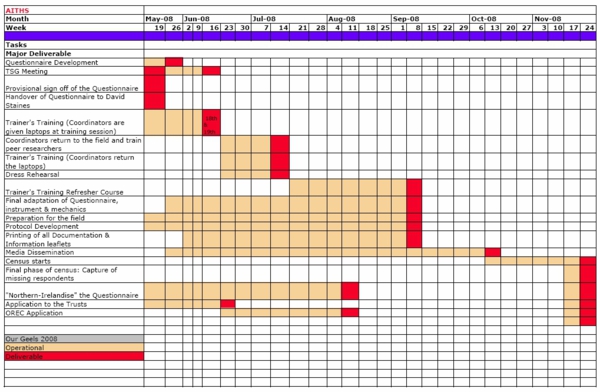In many respects, the most important aspect of project management is in the planning phase. Planning is such an important factor in that it clearly outlines both to yourself and those involved in your project what needs to happen, and more importantly, when it needs to happen. The planning phase can also be critical in helping to plan manpower and being able to set realistic benchmarks throughout the project as a gauge for overall completion.
Although a simple, traditional “table” can simply be written up by means of an action plan, these are often difficult to use to view the bigger picture and as such a snapshot overview is not always possible.
Instead, it is often best for businesses to use Gantt or Flowcharts when planning major projects, as this allows the greatest scope for seeing at what stage a project is at and whether any resources need to be redirected in order to achieve successful completion.

How should you use either of these methods to put together a brilliant project plan?
Start to Finish
Often the best way to begin is to write the final objective and where you are at present. It is then relatively straightforward to put together the steps in between, and enables you to plan a logical path of project completion. Having the desired final outcome written down will also help you to keep a plan concise, rather than going off on a tangent and perhaps wasting resource on things that are not critical to the overall project.
Consider too, how much time you will have. The manner in which you plan and dedicate resources will be different depending on whether you know how much time you have prior to the project, or whether you can decide the timeframe after deciding what needs to be done.
Tidying Up
Say you have three months to complete a project – if you are planning a flow chart then you will need to tidy up the order and make it clear how long each part of the project should take. If you are using Gantt charts then you will find this phase a lot easier, as you can put each task onto a spreadsheet and indicate how long it should take, and the additional resource required.
A Gantt chart will also allow you to easily see any amendments you need to make, for example if your plan means you have too many things going on at once, it is easy to reallocate resource and update the plan. While flow charts can also be effective, they can lead to projects being managed somewhat reactively. A Gantt chart is a much better “snapshot” view of a project.
Completion
Using a Gantt chart you can follow the logical completion of your project and easily see if anything has been completed ahead of schedule or whether you are likely to run behind with things. While this is also possible using a flowchart, you will likely find it much easier to feel in control of things using the Gantt model instead.
Smaller projects, or plans for those actually working on the project, would work as flowcharts, however from a management perspective Gantt charts always tend to make life easier.
Posterita is an online point of sale (POS) for retail businesses. They also provide management and marketing advice to their partners to help their businesses grow.

